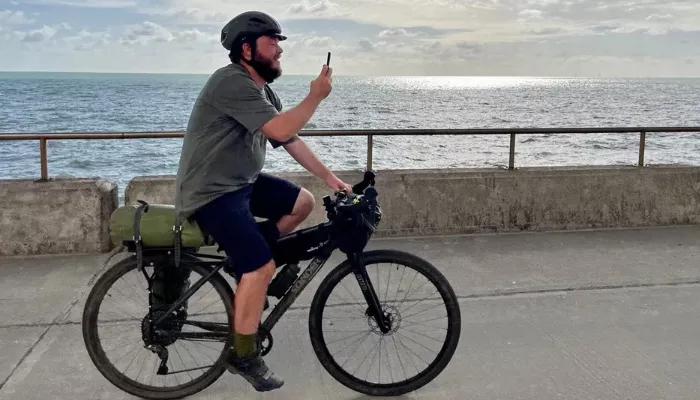In the world of cycling, the pannier rack has long been overshadowed by the trendier seatpack. But for many cyclists, particularly those with smaller frames, the seatpack has been more trouble than it’s worth. It’s time to reconsider the pannier rack, a piece of equipment that might just be the answer to a more comfortable, stable ride.
As a cyclist who enjoys occasional bikepacking trips, I’ve learned to adapt packing techniques used by seasoned adventurers. I may not be a world traveler or a participant in the Great Divide race, but I do love heading out for local rides in southern England. My packing tends to be simple—enough gear for comfort, warmth, and a good cup of coffee, along with essentials like a tent, sleeping bag, a change of clothes, and a small stove. While I don’t overpack, I do indulge in the luxury of a pillow for extra comfort.
However, one consistent challenge has been the limitations of packing on my small frame bike. The front triangle of my bike offers little space for storage, and while frame bags exist, they either restrict bottle placement or feel awkward. As a result, I’ve turned to saddle bags or seatpacks, but I’ve found them to be far from ideal.
Seatpacks, while popular, come with their own set of frustrations. For riders like me, who are at the top end of the small frame size range, the added weight of a large seatpack can cause it to sway annoyingly like a wagging tail. Despite tightening straps and adjusting the pack, it’s hard to prevent this swinging motion, which makes riding feel less controlled and more cumbersome. It’s like being a clumsy version of Alberto Contador, constantly adjusting while trying to maintain balance.
In my search for a better solution, I decided to invest in an Old Man Mountain Rack. This innovative piece of equipment functions like a traditional pannier rack but doesn’t require mounting brackets. Instead, it attaches directly to the front or rear axle. The result is a stable, sturdy setup that can carry more weight than any seatpack I’ve used, and it’s far more comfortable. What’s even better is that it’s easy to swap between different bikes. I’ve used it on my town bike for carrying my son’s diaper bag and even for transporting baked goods without worry. On bikepacking trips, I’ve used it to carry my tent and dry bags, and I’ve often forgotten it’s there—thanks to how securely it holds everything.
This experience led me to question: why did we ever embrace seatpacks in the first place? Perhaps they were originally designed with taller riders in mind, those who could easily fit a frame bag and only needed a small seatpack. Alternatively, maybe they became popular as pannier racks fell out of favor, associated with old-school commuter bikes and retro designs. The shift away from pannier racks was likely compounded by many bike manufacturers omitting mounting options, especially on road and gravel bikes.
Upon reflection, I’ve come to realize that the pannier rack was always the better option. While traditional panniers might have been heavy and cumbersome, lighter, more streamlined versions are now available, making them a viable choice for today’s cyclists. There’s no longer a need for the awkward, unstable seatpack.
If I ever set off on a long-term bikepacking adventure, you can be sure I won’t be using a seatpack. Instead, I’ll opt for secure, spacious pannier bags that provide stability and ease. It’s time for the pannier rack to make a comeback—sleeker, lighter, and cooler than ever.
Related topics
- Is a Terrapin a Turtle or a Tortoise?
- What Does a Gopher Tortoise Look Like?
- Is a Box Turtle a Turtle or a Tortoise?

